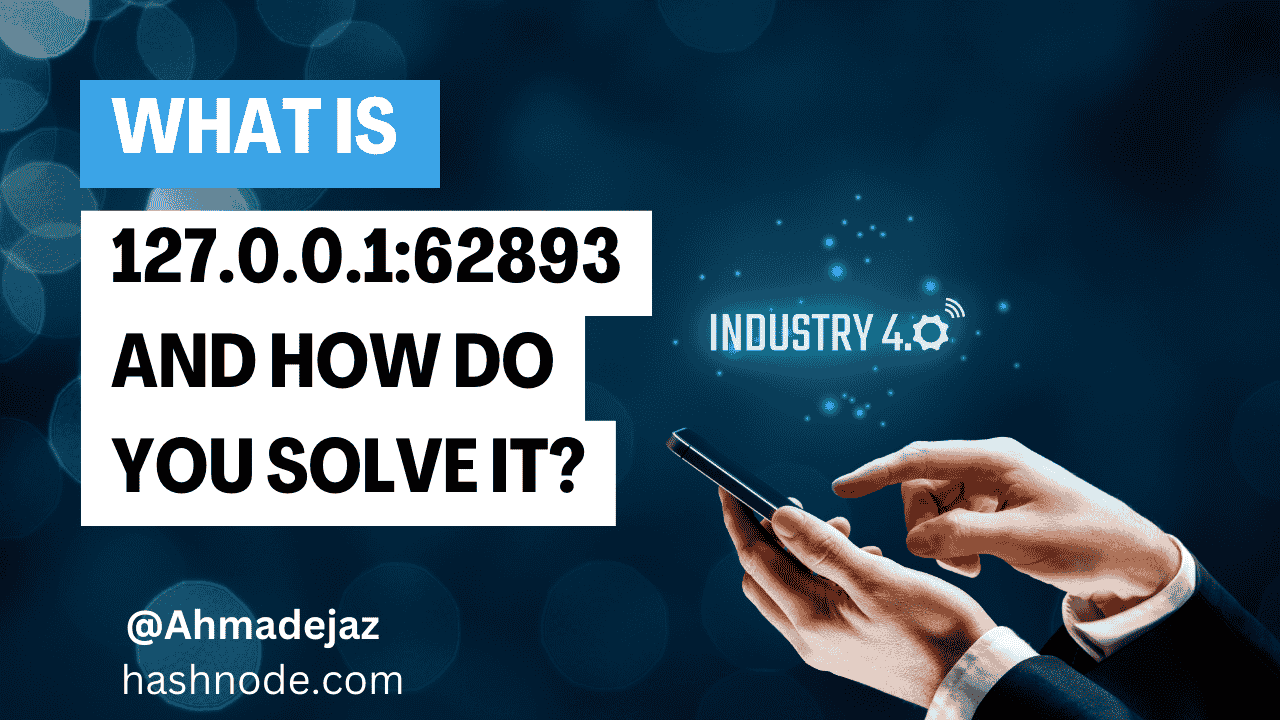What Is 127.0.0.1:62893 and How Do You Solve It?
 Ahmad Ejaz
Ahmad Ejaz
Have you seen 127.0.0.1:62893 at least once and pondered what it is and how to fix it? So do many. Most people encounter this while tinkering with their local server or some application on their computer. The more one understands this address and the type of problems it may cause, the more he saves time and agony. Let's break it down and learn how to solve some of the common problems related to this.
What is 127.0.0.1:62893?
127.0.0.1:62893 would be an internal IP address of your computer allowing it to communicate with itself. The portion 127.0.0.1 is a loopback address, local to your machine, and the numbers following the colon, 62893, happen to be a particular port number which is a traffic address to a specific service running on your computer.
You probably do development, testing, or debugging if you are reading this. Developers always use it to test applications without exposing it to the wider web. However, when something goes wrong with this setup, errors or connection issues manifest. That can be quite frustrating, especially if you are not sure why that is happening. AdvertisingAgency.blog
Reach Local Services at 127.0.0.1:62893
These are some of the IP addresses that local services depend on to operate. Entering it into your web browser or terminal will allow you to interact directly with the services or apps running on your local computer, which is super handy for web developers needing to test websites or apps locally.
However, the local services could cause some sort of problems so you would face issues because probably some other service is running on the same port or your firewall settings may have blocked the connection. For example, if there was already some service that used 127.0.0.1:49342 it can also deny you access to 62893 for example. Here is how you sort the conflicts and get your services to start back up.
Is 127.0.0.1:62893 Malicious?
Now, you might be wondering, does this 127.0.0.1:62893 pose a problem with security? I mean, it is pretty technical, but don't worry, the 127.0.0.1 is your local IP, so no one can access it other than from your computer, and that's a threatening aspect of hacking, which it has avoided.
If you do test sensitive data or applications on this port, ensure that your local services are secure and not exposed to other users on your network. Nobody from the outside can hit 127.0.0.1 but internal misconfigurations might unlock some doors for security vulnerabilities.
General Issues With 127.0.0.1:62893
Some of the most typical issues with the service 127.0.0.1:62893 are when services cannot load or do not respond at all. There can be numerous reasons for why this is happening. First, the service you're trying to access may not be running or perhaps has crashed and is not responding. Very often the simple solution is to restart the application.
A very common problem is a port conflict. For example, if another service is taking 127.0.0.155553 or some other port, you cannot get to 62893. Look for which services are using your ports.
Finally, firewall or antivirus software may terminate access to 127.0.0.1:62893. Your security software sometimes identifies local IPs as threats, and this creates problems with access to services and applications. You might solve that problem by a change in the firewall settings allowing 62893.
How Do You Troubleshoot Issues With 127.0.0.1:62893?
If the problem is on 127.0.0.1:62893, you would make sure first that the service you're trying to access is running. You can do that by opening up your task manager for whatever system you are on or getting into your terminal and checking if it's running. If not, try restarting; it often solves the problem.
If you suspect a port conflict, you can easily find out which service uses which port either via terminal commands or by making use of network tools. If some other service happens to occupy port 62893, then you ought to either stop the said service or reassign it.
In some circumstances, a simple measure such as clearing your browser's cache or resetting your network settings will solve the problem of connection. Cache, at times, will not allow your browser to navigate 127.0.0.1 correctly. Most often, clearing the cache will resolve this problem.
Lastly, ensure that your firewall or antivirus software is not blocking the port. Allowing 62893 through your firewall will enable your local services to run properly. It is an easy step that can prevent future problems by checking these security settings.
Conclusion
In short, 127.0.0.1:62893 is an integral part of the process when accessing and testing local services but can indeed be its own problem set. Understand how the IP works and how to solve problems so that you do not waste precious time and energy on maybe minor technical issues. Whether developer or only troubleshooting network issues, knowledge of these solutions keeps your local services running smoothly.
Subscribe to my newsletter
Read articles from Ahmad Ejaz directly inside your inbox. Subscribe to the newsletter, and don't miss out.
Written by
